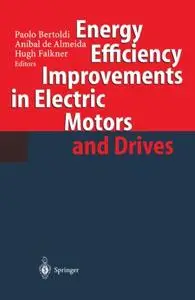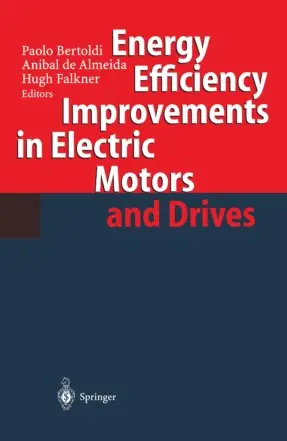Energy Efficiency Improvements in Electronic Motors and Drives by Paolo Bertoldi, Aníbal T. Almeida, Hugh Falkner
English | PDF | 2000 | 586 Pages | ISBN : 3540674896 | 48.5 MB
The 1997 Kyoto Conference defined CO2 emISSIOn targets for the developed regions of the world. The EU target of decreasing the emissions 8% below the 1990 level, by 2010, will require a very substantial effort covering basically all activities if such a target is to be reached. Energy-efficient motor systems can provide one of the most important opportunities to achieve electricity savings in a cost effective way, avoiding at the same time the emission of tens of millions of tons of carbon. The reduction of energy consumption through improvements in energy efficiency is one of the major instruments for developed and developing countries to meet the Kyoto commitments. Energy efficiency is also a key element of the European Union (EU) energy policy, since it improves the efficiency of the economy, increases energy supply security, and decreases harmful emissions due to electricity generation. Electric motor systems use over half of all electricity consumed in developed countries. Typically about 70% of the electricity which is used in the industrial sector and about 35% of the electricity used in the commercial sector in the EU is consumed by motor systems. In industry, a motor on average consumes an annual quantity of electricity which corresponds to approximately 5 times its purchase price, throughout its whole life of around 12 to 20 years.
Thanks For Buying/Renewing Premium From My Blog Links To Support
Without You And Your Support We Can't Continue
Without You And Your Support We Can't Continue



